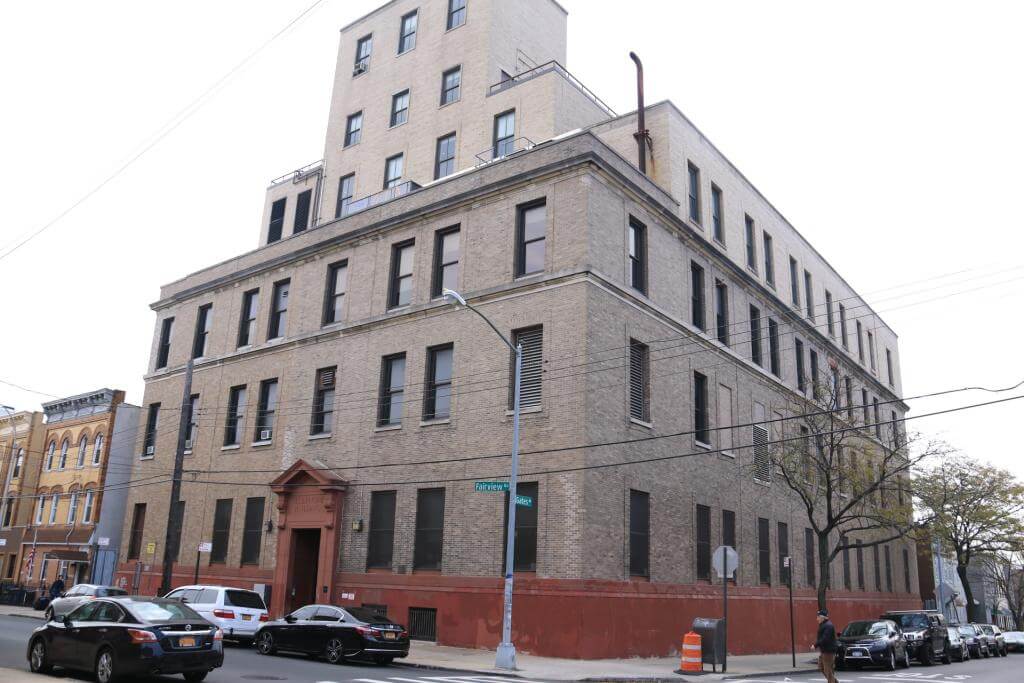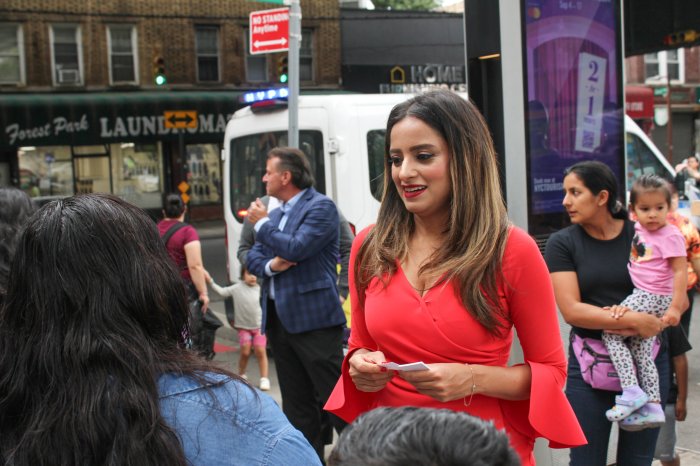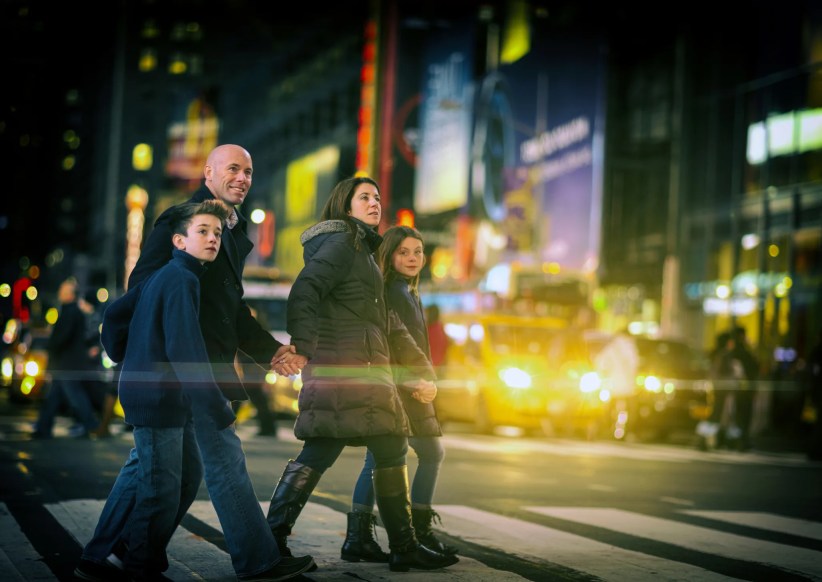Alexander Graham Bell, who was born in Scotland, invented the telephone in 1876. The U.S. government issued patents to him in 1876 and 1877. As we shall see, however, Mr. Bell’s invention soon had an impact on jobs in Ridgewood, Middle Village and Bushwick.
In 1877, the Bell Telephone Company was founded and later reorganized as two entities: American Bell and New England Telephone.
The early phones were the “hand crank” type that involved the magneto system, with a small generator contained inside the telephone’s wooden box. When used, the telephone placed a call to a central exchange switchboard that facilitated the connection to another telephone.
The first commercial telephone exchange opened in New Haven, Connecticut, in 1878. It had 21 customers and operated as a franchisee, under a license from Bell Telephone. It’s interesting to note that the first telephone classified director also appeared in New Haven.
Neighborhood connections
In 1879, the telephone company opened its Brooklyn Central Office and, in 1880, the Williamsburg Exchange from which the first telephone lines to Ridgewood, Glendale, Maspeth and Middle Village were installed. Cord Meyer and Company in Maspeth was among the first subscribers for telephone service.
In 1882, the American Bell Telephone Company acquired a controlling interest in the Western Electric Company.
The American Telephone and Telegraph Company (AT&T) subsequently was created as a subsidiary of American Bell to establish and operate a network of long-distance telephone lines. The company was chartered in New York state — the starting point for the long-distance network — in 1885 and the Western Electric Company served as its manufacturing unit.
By 1900, AT&T had become the parent company of the Bell companies.
Bushwick provides relief
Locally, the first central telephone office building in the Ridgewood/Bushwick area opened in 1894 on Greene Avenue near Broadway in Bushwick. This office relieved the Williamsburg and Bedford-Stuyvesant offices of some of the telephone traffic.
Early in 1903, a new and larger Bushwick central office replaced the old magneto manual office. It had 20 operators and a capacity for serving 1,600 customers, which was five times the capacity of the old office.
As the residential builders purchased farmland and built rows of brick houses in Ridgewood, the Bushwick central office expanded, and eventually, it had 66 operators serving 7,800 lines.
Calling the exchange
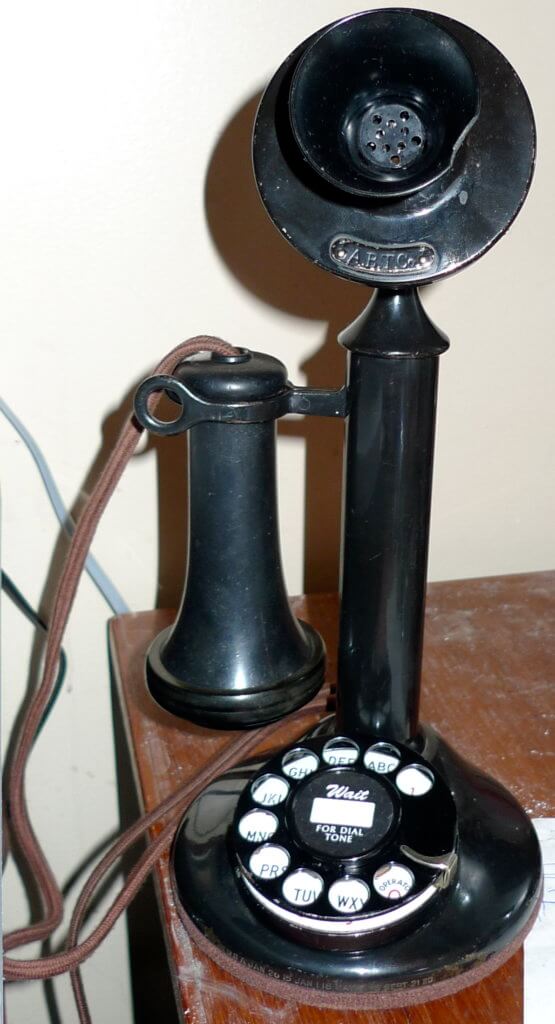
On Jan. 5, 1918, a new telephone center was established at 680 Fairview Ave. in Ridgewood, with “Evergreen” as the exchange. In 1922, the “Juniper” exchange was established in Fresh Pond, Maspeth and part of Middle Village that had previously been served by the Newtown Central Office.
In 1925, the new “Hegeman” dial central office went into operation, which permitted dialing the call rather than having the operator place it for you. By 1936, “Evergreen 2,” “Hegeman 3” and “Juniper 5” offices were serving about 17,800 phones in the Ridgewood area, handling about 47,500 calls per day.
During this period, the candlestick-type telephone was in vogue. This upright mode was popular during the 1900s before it gave way to the “cradle,” a Depression-era type of desk phone that introduced a one-piece handset.
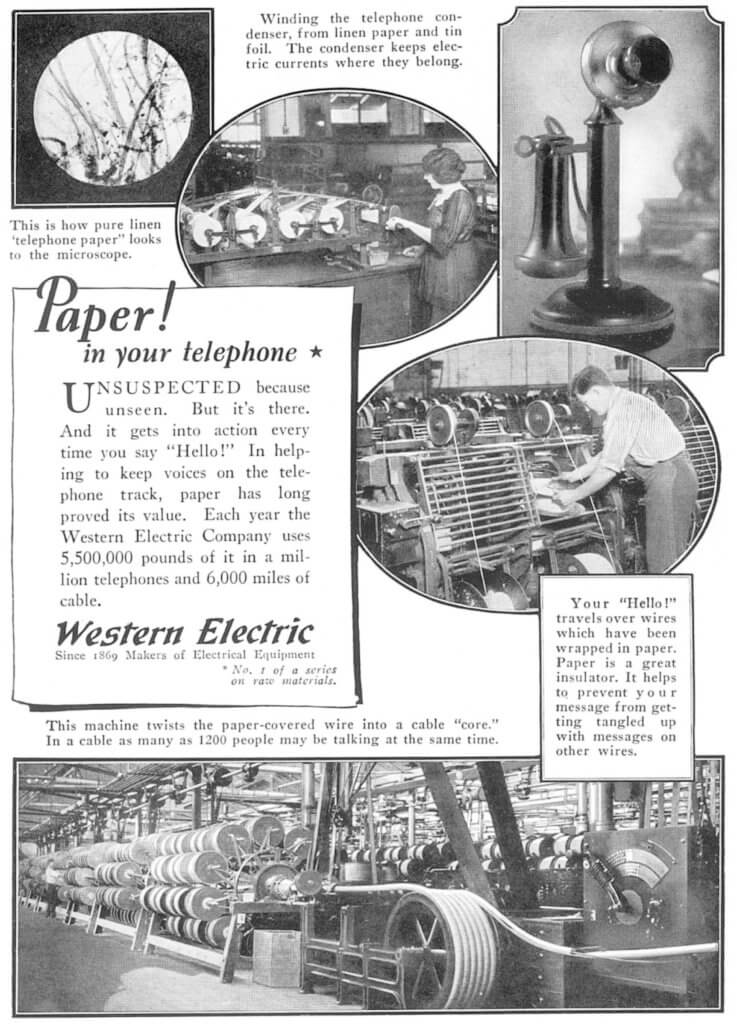
The Western Electric advertisement presented in this story originally appeared in a 1923 magazine. Note the “candlestick” phone pictured in the ad.
In 1959, the Fairview Avenue building in Ridgewood, with 10 dial offices, was serving 56,000 telephones and handling about 250,000 calls per day. The telephone company decided to expand the building in 1959 by adding a fourth story to the three-story structure. The “Empire 6” exchange was added in December of that year.
The Ridgewood office was one of the first to handle direct dialing. By 1959, the following exchanges had been added to local phone service: “Evergreen 1,” “Evergreen 2,” “Evergreen 6,” “Glenmore 6,” “Hyacinth 1,” “Hyacinth 7,” “Twining 4” and “Vandyke 1.” Thirty-three operators handled “operator-assisted” calls.
Eventually, the telephone company did away with the names on the exchanges and substituted numbers. The “Twining 4” exchange is still in existence as “894.”
Today, the telephone company building on Fairview Avenue at the corner of Gates Avenue exists as a Verizon facility.
Middle Village manufacturer
In 1920, the C.B. French Company, a manufacturer of telephone booths, was located in Middle Village, south of Metropolitan Avenue on a Long Island Rail Road siding between the present-day M train station and 65th Lane. It had relocated there from its previous spot on the banks of the Newtown Creek.
The Turner-Armour Company, which also manufactured telephone booths, subsequently acquired the C.B. French Company. They continued to operate the plant in Middle Village.
On Nov. 22, 1929, the Ridgewood Times published a story with the headline, “Western Electric takes over Middle Village land.” The story follows:
The Western Electric Company has purchased a large factory and additional land in Middle Village. The factory is that of the Turner-Armour Company, and the sale included frontage on Metropolitan Avenue worth more than $700,000.
Immediate expansion of the Turner-Armour plant from a production of 1,000 telephone booths to 2,000 per month is expected, with an increase in the number of employees from 400. The Turner-Armour acquisition was previously known but the land purchases have just been completed.
Western Electric bought the Middle Village plant outright and leased the other plant at 1201 Flushing Ave. in Brooklyn for a term of years. The sale included all the property, buildings and machinery at Middle Village, all patents and developments underway and the inventories at the plants.
The plant will be known as the Queensboro Works of the Western Electric Company and will continue to manufacture a new and improved type of telephone booth.
In the 1930s, there was a baseball field on the property, with a backstop but no stands. On a deep fly ball to right field, the outfielder had to run back on the Long Island Rail Road tracks, keeping alert for steam locomotives.
We are uncertain when Western Electric Company closed the plant in Middle Village, but we think it was about 1965.
Enter Robert Hall
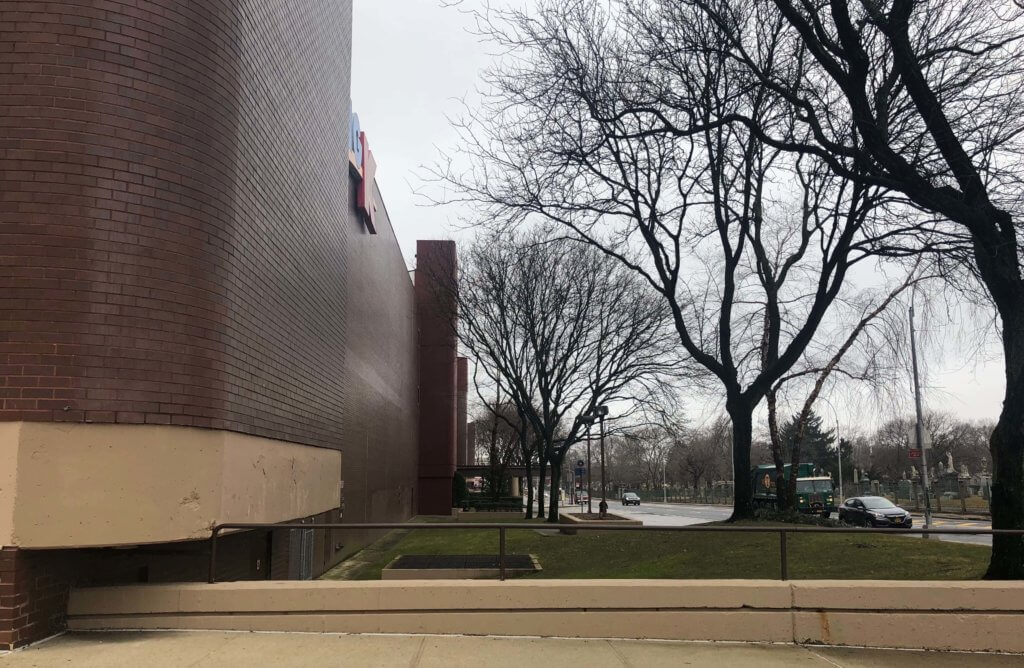
Subsequently, United Merchants and Manufacturers Inc., a large textile mill organization with multiple plants in the south, acquired the property for their Robert Hall Clothes subsidiary. They operated a chain of clothing stores, with their main advertising theme being that they sold at low prices right off the pipe racks in their stores.
We’re certain that many of our readers who are of the “baby boomer” generation remember only too well how they dreaded to hear the Robert Hall “Back to School” jingle signaling that the end to summer vacation was growing near. Among the chain’s locations were stores on Myrtle Avenue in Ridgewood and Queens Boulevard in Forest Hills.
In 1972 to 1974, an imposing, three-story building was erected on the Middle Village site with a total of 1.5 million square feet (500,000 square feet per floor). Robert Hall occupied the main floor. The second floor was leased to Macy’s department stores for a warehouse, and the third floor was leased to the city Department of Corrections for a training facility. The Metropolitan Museum of Art leased space for its mail order operation.
After several years of operating the facility in Middle Village, United Merchants and Manufacturers Inc. had financial difficulties, and with their Robert Hall subsidiary, filed Chapter 11 bankruptcy. Eventually, the property in Middle Village was sold, and the new owners established Rentar Plaza.
Robert Hall store gave way to Times Square Stores (TSS) and Waldbaum’s supermarket, both of which occupied the main floor along Metropolitan Avenue through the 1980s. The TSS was replaced by Caldor, a discount department store that lasted into the late 1990s before being transformed into a Kmart.
The Waldbaum’s supermarket moved to the bottom level of Rentar Plaza in the late 1980s with the opening of the Metro Mall shopping center, which also included a Pergament home improvement store.
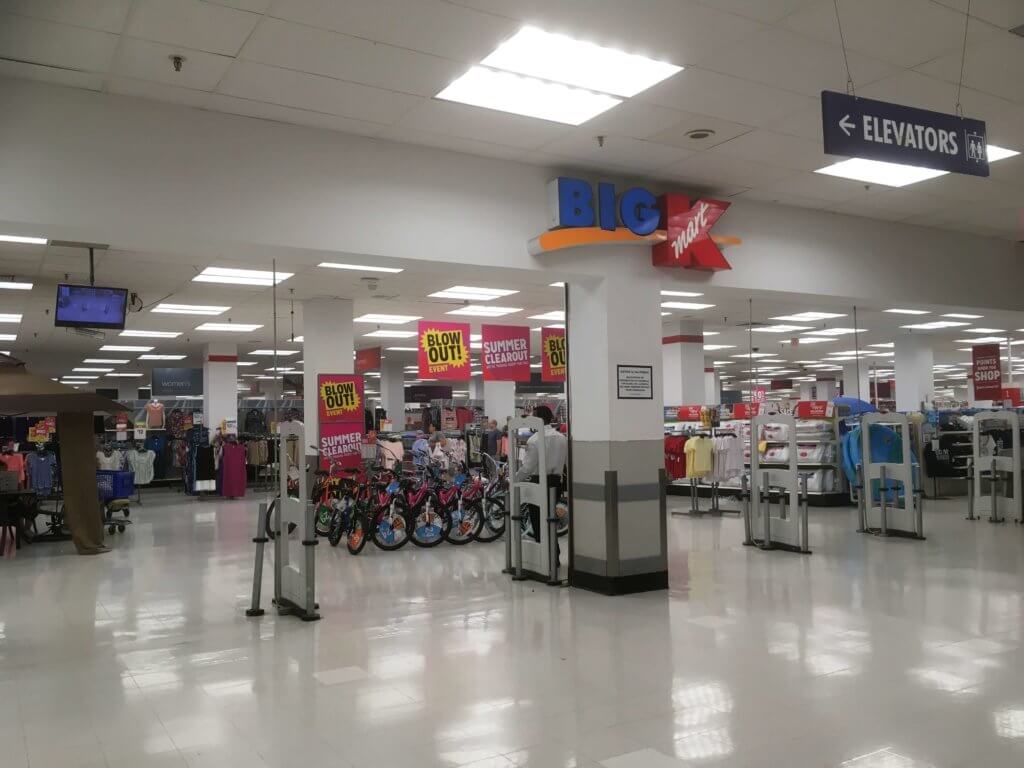
Turnover remained a constant at Rentar Plaza and Metro Mall in the years since. Toys “R” Us replaced the Waldbaum’s supermarket on the main level until the nationwide toy chain filed for bankruptcy and closed all of its locations in early 2018. Just months later, the Middle Village Kmart faded into retail history, as the department store chain consolidated amid financial troubles of its own. The main floor remains empty for now.
Downstairs at Metro Mall, the Waldbaum’s and Pergament stores would eventually close to make way for BJ’s Wholesale Club, which remains as the most active retail attraction in the complex.
This story originally ran in the Aug. 2, 2007, issue of the Ridgewood Times, with updated information added.
* * *
If you have any remembrances or old photographs of “Our Neighborhood: The Way It Was” that you would like to share with our readers, please write to the Old Timer, c/o Ridgewood Times, 38-15 Bell Blvd., Bayside, NY 11361, or send an email to editorial@ridgewoodtimes.com. Any print photographs mailed to us will be carefully returned to you upon request.

